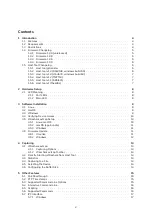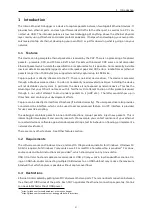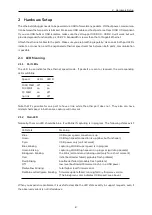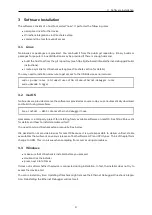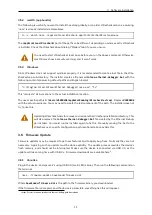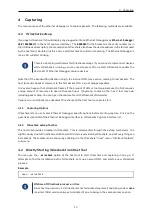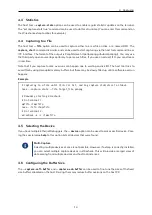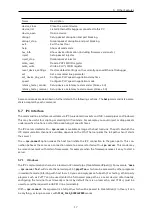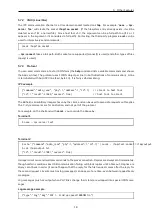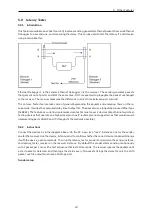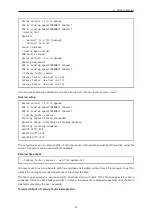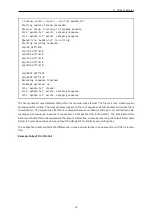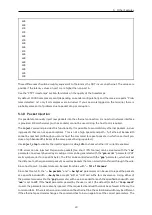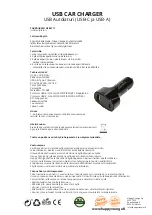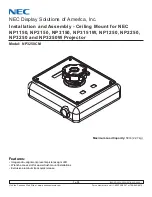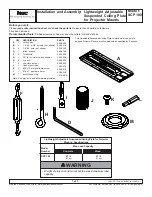
3 Software Installation
3.4 Verifying Device Access
A simple way to verify whether the software works is by simply running the host tool. It is a command
line program. On Windows, double-clicking
nose.exe
will open a terminal window, while on Unix, you
need to open a terminal window manually, and then run
nose
in it.
If the installation succeeded, and the device is connected, you should see the following:
Device 2:3:7 opened.
PHY A: link=down speed=0MBit
PHY B: link=down speed=0MBit
Warning: no link.
The example above has the device on USB bus 2, port 3, device address 7.
If the device could not be found or accessed, the following is shown:
No devices found.
You can stop the host tool by closing the terminal or by entering the ”exit” command.
3.5 Wireshark extcap Setup
Wireshark is the recommended way to use the Ethernet Debugger. It is 3rd party software and not devel-
oped by Intona. Download and install it from Wireshark’s website: https://www.wireshark.org/download
.html
Normally, the Windows installation procedure installs our host tool as a Wireshark ”extcap”. In short,
”extcap” allows external programs (such as our host tool) to provide a capturing source. See the Wireshark
extcap section for details. If the host tool is not correctly installed as extcap source, you will not be able
to start capture from the Wireshark GUI (but other methods of capturing will still work.)
The host tool supports extcap directly via special command line parameters. It must be located in the
”extcap” sub directory within the Wireshark installation directory or the user’s Wireshark configuration
directory. The paths depend on the operating system and the Wireshark installation location.
You can confirm whether it’s installed correctly by opening the Wireshark about dialog, and switching to
the ”Plugins” tab. There should be an entry named ”nose”.
Old Wireshark versions
The non-global/user-specific extcap paths below require at least Wireshark 3.1.1. Older
releases support global paths only.
3.5.1 Linux, macOS
It is recommended to create a symlink to the host tool. The global path is something like /usr/lib/wireshark/extcap/
or /usr/lib/x86_64-linux-gnu/wireshark/extcap/. The exact path depends on the Linux distro. The user-
specific path is usually
~/.config/wireshark/extcap/
.
The following should install it locally, assuming ”nose” is already installed:
mkdir -p ~/.config/wireshark/extcap/
ln -s `which nose` ~/.config/wireshark/extcap/nose
10


